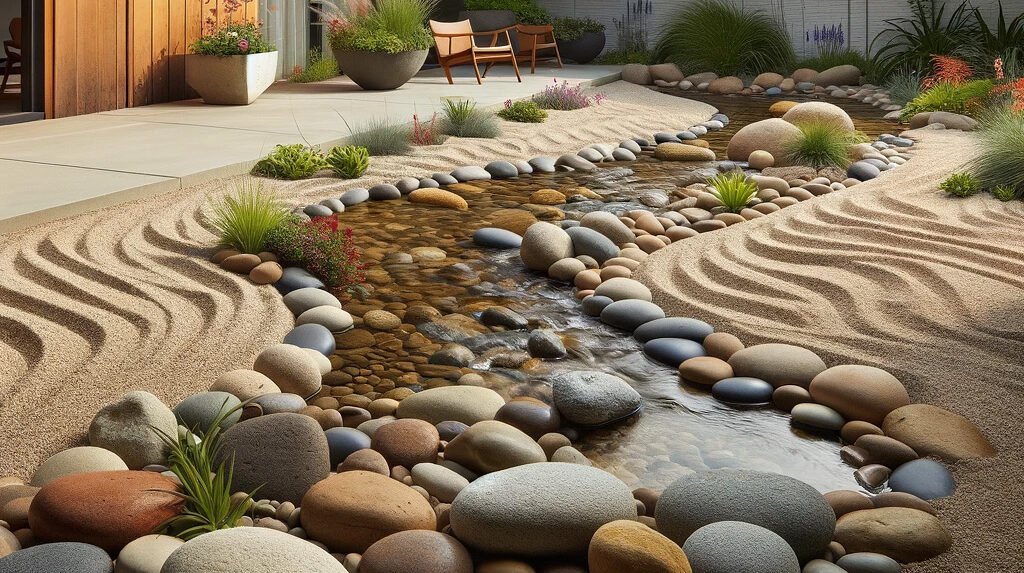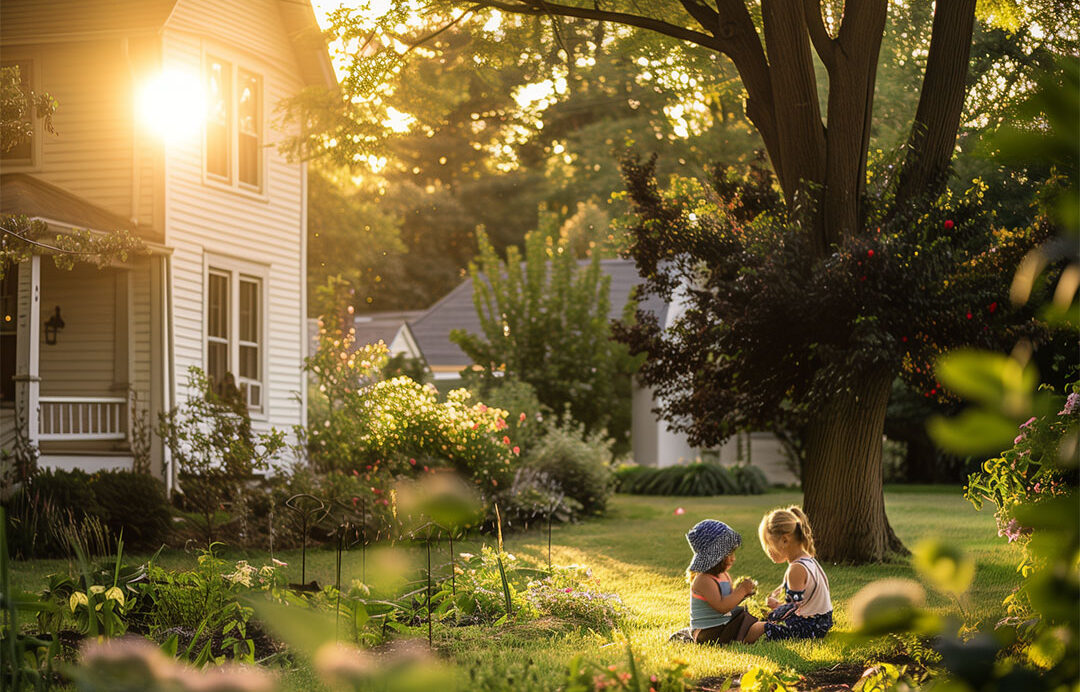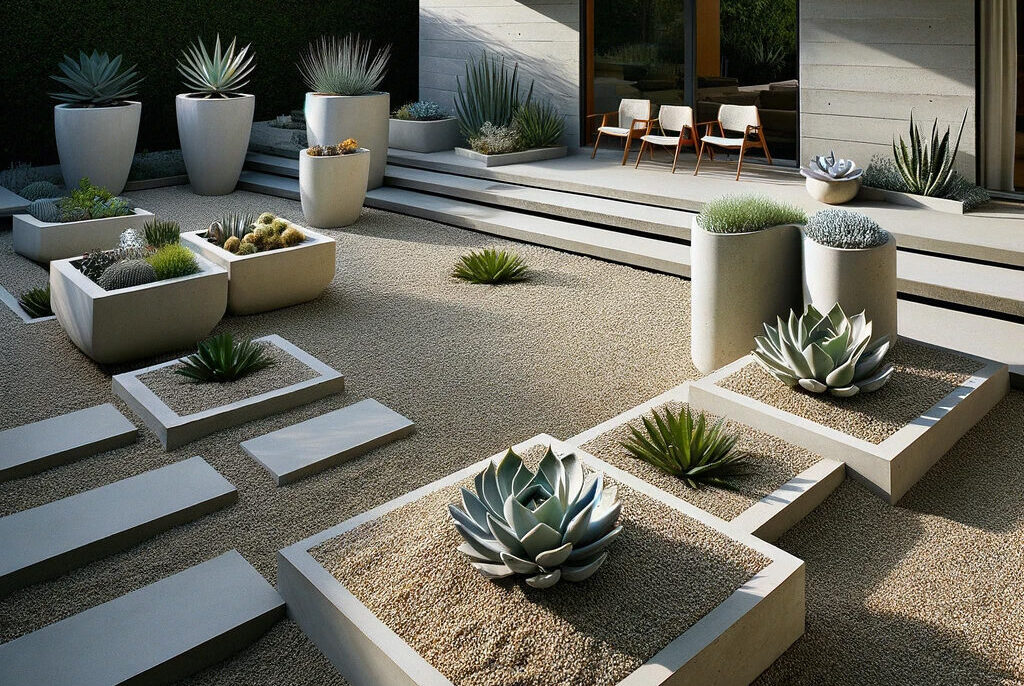Revitalize and redefine your outdoor sanctuary by delving into the realm of low-maintenance river rock landscaping ideas. In this guide, we will explore innovative concepts that effortlessly elevate the aesthetics of your outdoor space. Discover the transformative power of river rock elements and unlock the secrets to creating a harmonious, serene environment right in your own backyard. From enhancing visual appeal to simplifying upkeep, these landscaping ideas promise to rejuvenate your outdoor haven with style and ease.
Low-Maintenance River Rock Landscaping Ideas
If you’re in search of a low-maintenance landscaping option that infuses texture and visual allure into your outdoor space, consider incorporating river rocks. These sleek, rounded stones, available in various colors and sizes, offer versatile applications to elevate your landscape design.
In this informative article, we’ll delve into the numerous benefits of utilizing river rocks in landscaping. Additionally, we’ll present inspiring design ideas, practical maintenance tips, and cost considerations for incorporating this natural material into your river rock landscaping.
Types of River Rocks
Before you start your river rock landscaping project, it’s important to understand the different types of river rocks available. There are typically three types of river rocks used in landscaping: pea gravel, crushed stone, and river rock.
Pea gravel is the smallest type of river rock, and is typically used for pathways and groundcover. Crushed stone is a bit larger, and can be used for borders and accents in addition to pathways. River rock is the largest type of river rock, and can be used for larger accents and features like waterfalls and ponds.
Each type of river rock has its own pros and cons. Pea gravel is easy to walk on and relatively inexpensive, but can be difficult to shovel and tends to scatter. Crushed stone is more stable and easier to shovel, but can be more expensive. River rock is the most visually striking, but can also be the most expensive and difficult to handle.
Design Ideas
Once you’ve chosen the type of river rock you want to use, it’s time to start thinking about design ideas. River rocks can be used in a variety of ways to add texture and interest to your landscaping.
One popular use for river rocks is creating pathways. These can be straight or winding, and can be made of just river rocks or a combination of river rocks and other materials like pavers or concrete. River rock pathways are low-maintenance and can add a natural feel to your outdoor space.
Another way to use river rocks is as borders and accents. These can be placed around flower beds, trees, and other landscaping features to add visual interest and help define the space. River rocks can also be used to create natural-looking retaining walls that blend seamlessly with the surrounding landscape.
Maintenance Tips
While river rocks are low-maintenance compared to other landscaping materials, they do require some upkeep to stay looking their best. Regular maintenance tasks include removing debris and leaves from the rocks, pulling weeds, and replenishing the rocks as needed.
To prevent erosion, it’s important to make sure your river rocks are properly installed. This may involve excavating the area, laying down a weed barrier or landscaping fabric, and adding a layer of sand or gravel before laying down the rocks. You should also avoid using river rocks in areas with heavy foot traffic or where heavy equipment may be used.
Cost Considerations
When contemplating the incorporation of river rocks into your landscaping, it’s crucial to grasp the cost implications associated with river rock landscaping. While river rocks may come with a higher price tag compared to alternative landscaping materials, there are effective strategies to keep costs within budget.
A prudent approach to cost savings is opting to source your river rocks locally, bypassing the potentially higher costs associated with big-box stores. Additionally, purchasing river rocks in bulk proves economical, reducing the overall cost per pound. To further manage expenses, consider employing river rocks strategically rather than covering your entire outdoor space. This strategic use allows you to achieve your desired aesthetic while maintaining a more budget-friendly river rock landscaping project.
DIY vs. Professional Installation
When it comes to installing river rock landscaping, you have two options: DIY or professional installation. DIY installation can be a great way to save money, but it’s important to understand the risks and challenges involved.
Before starting a DIY river rock landscaping project, make sure you have the right tools and safety equipment, and that you’re prepared for the physical demands of the job. You should also make sure you understand the proper installation techniques and have a plan for preventing erosion and protecting the rocks from weather damage.
Hiring a professional landscaper can be a more expensive option, but it can also save you time and ensure a high-quality result. Professional landscapers have the expertise and equipment needed to handle even the most complex river rock landscaping projects, and can help you achieve the look you want with less stress and hassle.
Conclusion
Incorporating river rocks into your landscaping provides an excellent avenue for enhancing the texture and visual allure of your outdoor space, all while ensuring minimal maintenance requirements. This versatile natural material offers myriad possibilities for elevating your landscape design. To fully realize the potential of river rock landscaping, it’s essential to comprehend the diverse types of river rocks available in the market.
Whether you opt for smooth, rounded river pebbles or larger river boulders, each type contributes a unique aesthetic dimension to your outdoor haven. These river rocks can be strategically placed to craft picturesque pathways, borders around flower beds, or even natural-looking retaining walls. The key lies in considering design ideas that align with your vision and the distinctive characteristics of the river rocks you choose.
Moreover, to ensure a long-lasting and vibrant river rock landscaping, adhering to maintenance tips is crucial. Regularly cleaning and inspecting the river rocks, addressing any weed growth, and maintaining the overall integrity of the design will keep your outdoor space beautiful and functional.
By combining an understanding of the diverse river rock options, creative design ideas, and diligent maintenance practices, you can create a truly enchanting and functional outdoor space. Discover the joy of spending time in a landscape enriched with the timeless beauty of river rock landscaping, where nature and design seamlessly coexist.
FAQs
1. How often do I need to replace my river rocks?
It depends on factors like foot traffic, weather conditions, and how well the rocks were installed. Generally, river rocks should last several years before needing to be replenished.
2. Can I use river rocks in areas with heavy rain or flooding?
River rocks can be prone to erosion in areas with heavy rain or flooding. If you live in an area with these conditions, it’s important to take extra steps to prevent erosion, such as using a layer of sand or gravel underneath the rocks.
3. Can I mix different types of river rocks in my landscaping?
Yes, mixing different types of river rocks can add visual interest and texture to your landscaping. Just be sure to choose rocks that are similar in size and color to create a cohesive look.
4. What’s the best way to remove weeds from my river rock landscaping?
Regular weeding is important to keep your river rock landscaping looking its best. You can use a hoe or other tool to remove weeds, or consider using a weed barrier or landscaping fabric to prevent weeds from growing in the first place.
5. Can I use river rocks in my vegetable garden?
While river rocks can add texture and interest to a vegetable garden, they may not be the best choice for areas where you plan to grow edible plants. River rocks can leach minerals into the soil over time, which may not be ideal for certain types of crops.
At A1 Grass, we offer a range of landscaping supplies, including river rocks, to help you achieve your landscaping goals. Whether you’re a DIYer or a professional landscaper, we’re here to help you turn your landscaping dreams into reality. Visit our website to learn more.
- Bermuda Grass for High-Traffic Areas: Top Resilient Landscaping Solution for 2024
- ZeroScape Landscaping Designs: Crafting a Drought-Tolerant Garden
- Mastering Hardscape Installation in the Dallas-Fort Worth Area: Tips for Success
- Choosing the Perfect Hardscape Materials: A Guide to Enhancing Your Outdoor Space
- 5 Affordable Hardscape DIY ideas: Transform Your Outdoor Space without Breaking the Bank




